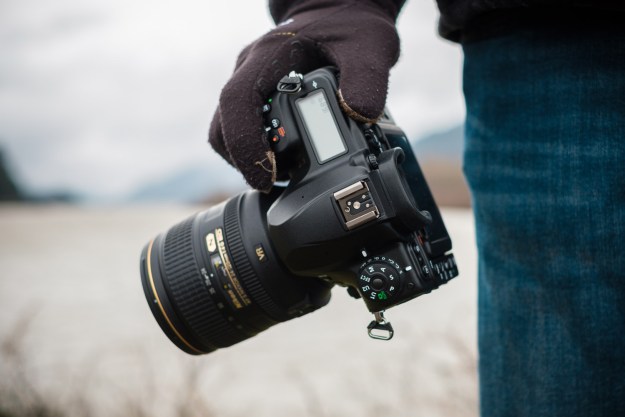
Nikon today formally took the wraps off its new D3 and D300 professional-level digital single-lens reflex cameras, offering new features and technologies which the company hopes will solidify its standing as one of the world’s top camera-makers.
First up, the Nikon D3 DSLR offers a 12.1 megapixel resolution with a new FX-format full-frame CMOS sensor, a 3-inch LCD viewfinder, two Compact Flash storage slots that enable backup and copying, and Nikon’s new EXPEED image processing systems that offers fast response time—including the ability to shoot as many as nine frames per second. The camera will also offer HDMI output via a separate accessory cable, along with a plethora of features that help define a pro camera: a scene recognition system, a sophisticated picture control system, a high-end auto-focus module, the ability to shrink down to 5.1 megapixel shots using part of the sensor (and cropping the viewfinder accordingly), and ISO sensitivity all the way down to 6400. The D3 should be available beginning in November at prices starting around $4,999.95.
On the more-affordable front, Nikon’s D300 DSLR offers a 12.3 megapixel resolution, a 3-inch LCD viewfinder, Nikon’s EXPEED image processor, and 51-point autofocus technology, along with Compact Flash storage and the D3’s scene recognition system. But it doesn’t share the D3’s price tag: the D300 should be about $17.99.95 when it becomes available in November.
Nikon has also announced a new series of three telephoto lenses and two pro-level zoom lenses which, of course, work with the company’s line of DSLR cameras. But remember that the price for high-end lenses rivals (and exceeds!) the cost of many high-end cameras: for instance, Nikon’s new AF-S NIKKOR 600mm f/4G ED VR telephoto lens will run a cool $9.499.95.
Editors' Recommendations
- Watch DJI’s video featuring Mini 3 Pro drone footage
- Nikon launches the Z9, a pro-grade camera without a mechanical shutter
- The Find X3 Pro has a 60x zoom ‘microscope’ camera, and it’s so much fun
- Nikon’s flagship and very pricey D6 camera finally starts shipping
- The Nikon D6 camera is finally arriving on May 21


